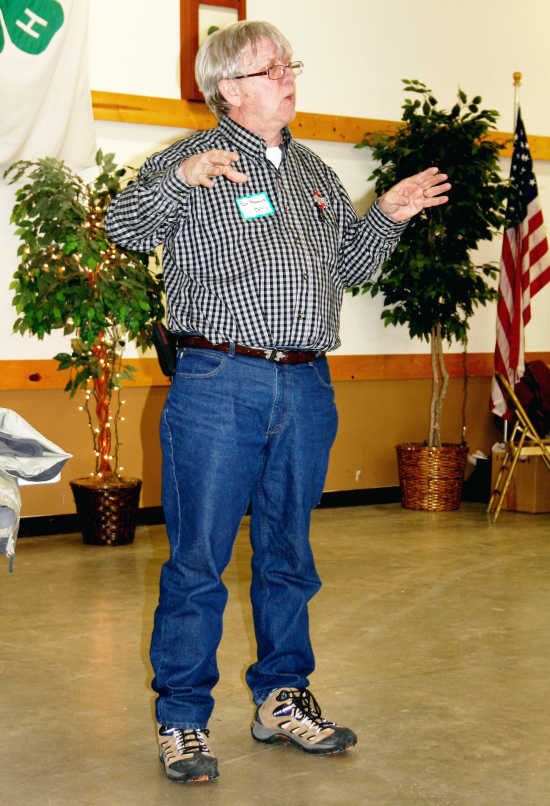SWCD program: Everything you wanted to know about slugs but were afraid to ask
If you've been searching for that lost shaker of salt or you're down to your last beer, take the advice of an expert: Don't waste either one on those slimy slugs in your garden.
Yes, those pesky, ooey-gooey, mucus-coated, slower-than-molasses slugs.
Put away that salt shaker and leave the beer in the fridge, suggests Ohio State University entomologist Ron Hammond, who addressed the annual Putnam County Soil and Water Conservation District (SWCD) dinner meeting Wednesday night at the local fairgrounds.
Long considered the "go-to guy" for questions on slug problems in the Midwest and across the nation, Hammond said he "got more calls (about slugs) from Indiana last year than anyplace else."

Slugs are more than garden pests, he assured. They can be real threats to plants and crops and farmers' bottom lines.
And yes, pouring salt on slugs will kill them, Hammond acknowledged, explaining that salt stops slugs by causing moisture to leave their bodies via osmosis. Such slime is essential to slugs for activities like moving, breathing and reproduction.
Pouring salt on a slug appears to melt it but what actually occurs is liquids inside its body dilute the salt and maintain the mucus layer. Too much salt will effectively dehydrate the slug's body and kill it off.
Likewise, Hammond suggested, setting up beer traps will send a few slugs to a sudsy grave. But like salt, neither old home remedy (or likewise coffee grounds or crushed eggshells) can be applied in a large enough quantity to be effective on more than a tiny garden plot.
And while slugs are essentially harmless to humans, they can destroy foliage faster than plants can grow with a potential to kill even some fairly large plants. Slugs often feast on plants even as they emerge from the soil, the expert said.
In a no-till-farming world, Hammond said the best way to keep that from happening is to plant early and encourage quick crop growth by whatever means possible.
"If you do a late planting," he told the SWCD group, "that's when you get hammered. And if you replant, believe me, the slugs are waiting for that second course."
Hammond, who became the primary Ohio extension entomologist for field crops several years ago, is considered one of the few people in the U.S. who conducted studies on slugs in field crops until recently.
And he's ridden the backs of those slugs to international travels and studies abroad and a series of appearances like the SWCD dinner at the fairgrounds.
The gray garden slug, Hammond said, is the most prevalent pest of its ilk and was introduced to the East Coast in the late 1800s through plant materials brought into the U.S. from elsewhere. Its pesky presence is now felt all over the country and the world.
Hammond, who is retiring in a couple of months after being involved in conservation tillage since 1979, said slugs began to propagate in earnest with the agriculture community's move to no tillage (which was implemented to help reduce soil erosion).
"Residue offers slugs a favorable habitat," he said. "Slugs are a problem because we've chosen to go to no tillage, so we caused the problem.
"Tillage would help," he offered, "but it's something we really don't want to do. I haven't really seen anything that takes them out except tillage."
Wrapping up his "swan song of slug talks," Hammond had no good news for the SWCD group.
"The bad news," he said, "is there's nothing really new on the horizon except for an improved iron phosphate bait."
During the business portion of the SWCD annual meeting, Angela Kiste was elected to the Board of Supervisors, succeeding Mike Martin.
She joins Byron Gough, Mike Rissler, Kerry Ames and Kerry Williams on the board.
Meanwhile, honored during the program were:
-- Ron Sutherlin of Cedarview Farms as Indiana River Friendly Farmer for 2013.
-- Ron Cash of Double R Farms as Putnam County Conservation Farmer of the Year for 2013.
-- J.B. Michaels as Putnam County Woodland Conservationist of the Year for 2013.
